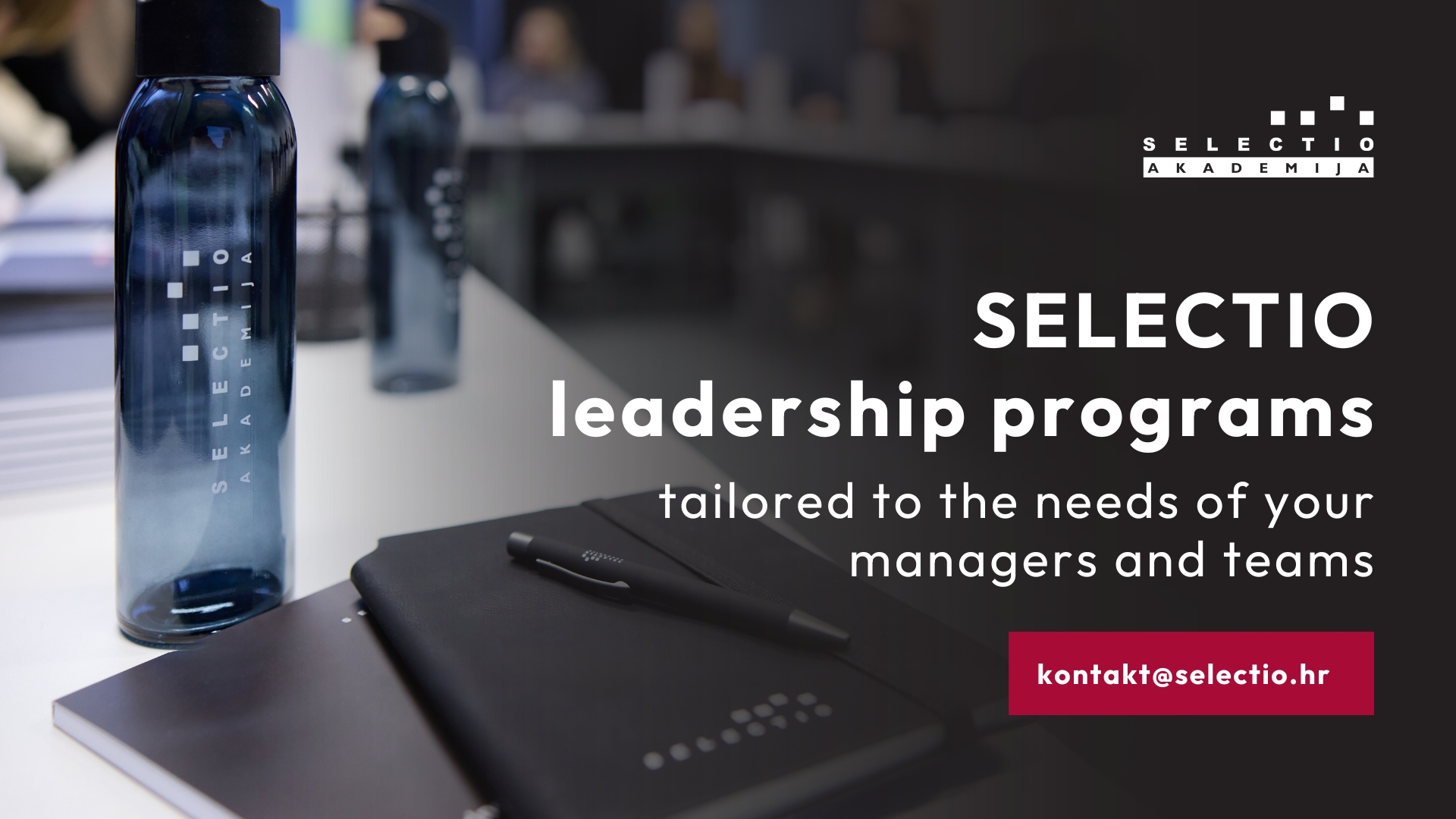In 2025, leaders will face the need to adapt to new management standards that combine agility, inclusiveness, sustainability, and emotional intelligence. Transformational leadership is characterized by the ability to provide visionary guidance through turbulent changes, adapt to new technologies, and inspire teams to achieve collective success. According to trends and predictions cited in the “Future of Jobs Report 2025” by the World Economic Forum, transformational leaders will play a key role in shaping the future global workforce. Alongside transformational leadership, we bring six more key trends that will shape leadership in 2025.
Transformational leadership will replace transactional leadership
While technological changes present organizations with new challenges and opportunities, generative artificial intelligence (GenAI) has seen an eightfold increase in investment since 2022. It is predicted that artificial intelligence (AI), digitalization, automation, and data analytics will transform up to 86% of organizations by 2030. For leaders, this means guiding their organizations through unpredictable technological changes and steering teams toward technological literacy, while simultaneously building resilience to disruptive innovations.
Leaders who combine strategic vision and emotional intelligence play a crucial role in guiding teams through this revolution. Transformational leaders are those who encourage change and support innovation, recognizing shifting labor market conditions and responding to them in a timely manner.
Unlike transactional leadership, which focuses on short-term goals and process alignment, transformational leadership emphasizes inspiration and long-term vision. This model enables leaders to cope with uncertainty and rapid changes. Namely, the World Economic Forum highlights an increasing number of open positions for roles like AI specialists and data analytics experts, while traditional administrative roles are rapidly disappearing. This means leaders should invest in digital tools and develop skills of the future among their employees, such as analytical thinking, technological literacy, and agility. Leaders in the domestic market should follow the same conclusions.
Agility should foster change culture
Agility, as a characteristic of transformational leadership, involves quick decision-making and proactive anticipation of change. For example, leaders can use analytical platforms to predict market trends and optimize business processes. They should effectively inspire their teams and ensure that each team member has the opportunity to stand out with their unique contribution to achieving a shared vision. That is why leaders worldwide have been using the Belbin Team Roles® model for years— a methodology that helps them better understand the strengths and advantages of all team members, enabling them to make optimal use of their potential. Additionally, leaders should encourage individual development and ensure that technology serves people, rather than the other way around. This way, leaders can create and promote a work environment that generates innovation and team synergy.
Disruptive changes, such as economic crises and geopolitical instabilities, have become everyday occurrences, and in such an environment, the only constant is—change. Therefore, agile leadership competencies will be crucial for managing uncertainty and navigating transitional periods. Leaders should develop resilience and the ability to make well-considered decisions in stressful situations. To keep teams motivated during challenging times, it is essential to foster effective and transparent communication while leading with a clear vision.
Slower economic growth and inflation have been identified as key transformation drivers for 42% of global employers. One way to address these challenges is to create a change culture. In addition to open communication and a clear vision, this also involves actively engaging teams in the decision-making process. Leaders who motivate their teams and create a sense of security—even in times of uncertainty—can ensure the success of the organization and the retention of talent.
Diversity and inclusion initiatives cannot be overlooked
Are today’s leaders ready to manage teams that include full-time employees, freelancers, consultants, and AI assistants? This is not a futuristic scenario but a reality that awaits us in 2025.
Diversity in the workplace today encompasses more than demographic aspects—managers face the challenge of integrating human and virtual talents. World Economic Forum expectations indicate that the share of tasks completed through human-machine collaboration will rise to 33% by 2030, while tasks performed exclusively by humans will decrease to 34%.
Therefore, managers face the challenge of managing collaborators of different statuses—from full-time employees to external collaborators, consultants, and freelancers. Leaders must be capable of addressing challenges posed by integrating artificial intelligence and facilitating collaboration between internal and external talents. In such teams, leaders will be responsible for team cohesion, while productive collaboration can be ensured through clearly defining the roles and responsibilities of all team members, regardless of their status.
Leaders must continue to encourage open communication and ensure that every team member feels like an equal participant. Managing diverse teams requires an inclusive approach and the ability to coordinate among members with varying levels of involvement and responsibility.
According to the World Economic Forum, 47% of employers expect diversity to become a key driver of innovation by 2030. Additionally, according to the ADP Research Institute, as many as 76% of workers would consider changing jobs if they encountered a lack of DEI (diversity, equity, and inclusion) initiatives in their workplace. That is why DEI initiatives are becoming indispensable. The World Economic Forum report shows that 83% of employers have already implemented such initiatives, contributing to the attraction of a wider talent pool.

Leaders will balance virtual and physical presence of employees
Hybrid work models require adjustments to ensure team connection and productivity, regardless of where the team is located. As organizations shape hybrid models balancing flexibility and team connections, leaders must balance between virtual and physical presence to ensure team engagement.
Leaders must therefore apply a personalized approach to leadership. This means recognizing the unique needs of each employee and adjusting management accordingly. Regular virtual meetings, complemented by in-person gatherings, can help maintain team spirit.
It is important to manage hybrid teams effectively because employees who work more frequently from home may feel excluded from brainstorming sessions that naturally occur among colleagues in the office, which can diminish their sense of connection to the team. This is one way proximity bias can negatively impact a team. Proximity bias is the tendency of managers to favour employees who are physically present in the office over those working remotely. To overcome the challenges posed by this phenomenon, it is important for leaders to regularly conduct organizational climate and employee engagement surveys to measure perceptions of fairness, inclusion, and engagement. The results can highlight differences in the experiences of remote, hybrid, or in-office employees and help create strategies to bridge these gaps.
Continuous learning and reskilling remain foundations of competitiveness
As much as 59% of the global workforce will need to undergo additional education by 2030 to keep their competencies relevant, while as much as 39% of current skills will become obsolete. In such an environment, organizations face numerous challenges and opportunities that demand a new understanding of leadership. The rapid obsolescence of skills will require leaders to focus on continuous learning and internal talent mobility to help their employees develop relevant competencies.
In Croatia, where the education system often lags behind market needs, organizations have the opportunity to bridge this gap by introducing innovative educational programs. For example, they can implement programs for talent development and the reskilling and upskilling of employees. Organizations can collaborate with educational institutions or external consultants to design specialized programs tailored to their needs. A focus on analytical thinking, and strategic decision-making will enable competitiveness.
In such an environment, leaders must become coaches who foster continuous learning within organizations. An important feature of learning organizations is the promotion of mentorship programs. Introducing a culture of learning is a strategic move that also strengthens employee loyalty. When organizations invest in talent development, their employees feel valued and are more engaged. Results of organizational climate and employee engagement surveys conducted on 50,000 employees in Croatia provide insights into how employees perceive their workplace and what motivates them. Career development is currently among the weakest-rated areas, indicating that the greatest improvements can be achieved in this segment, which is important to employees.
Sustainable leadership should balance ethics and profit
It is predicted that the inflation rate will reach 3.5% by the end of 2025. Together with rising living costs, this poses a challenge for organizations needing to optimize processes and costs. Therefore, transformational leaders must be ready to balance business priorities with employee satisfaction.
The World Economic Forum reports that jobs in green sectors will be among the fastest-growing by 2030. Leaders who recognize the importance and potential of the green transition and integrate sustainability into their business strategy not only meet societal expectations but also create a foundation for long-term employer branding based on socially responsible business practices.
Leaders must adopt a sustainable leadership approach, including reducing the organization’s ecological footprint, implementing green practices such as switching to renewable energy sources and reducing waste, investing in socially responsible practices and projects that improve the quality of life in local communities, as well as employee wellbeing. Thus, sustainability becomes one of the most important business philosophies upon which leadership is based.
In sustainable leadership, it is important to maintain authenticity—leaders who act with integrity and transparency successfully build trust, both among employees and with external stakeholders.
Emotional intelligence will be a key dimension of leadership
Leadership is not about managing processes—it is the ability to understand and connect with people. Emotional intelligence is becoming a key competency that allows leaders to understand their teams and connect with them. Korn Ferry highlights emotional intelligence as a key competency for leaders in 2025, emphasizing that empathy is critical for success, especially in hybrid working conditions where personal contact is limited.
Applying emotional intelligence involves actively listening, understanding employee needs, and adapting leadership to ensure maximum engagement. Empathetic leaders listen to feedback from their teams, adapt strategies, and create an environment where everyone feels valued. This not only strengthens trust but also increases team cohesion.
Investing in new leadership competencies is essential in the era of transformational leadership
The future of the labor market is rapidly being redefined, so leadership approaches must evolve to inspire, include, and empower a dynamic, dispersed, and diverse modern workforce. Organizations should therefore invest in leadership development programs to ensure leaders are equipped with the competencies needed to successfully transform businesses, understand technology and people, and inspire teams toward a shared vision. Transformational leadership leads to the creation of a culture that rewards adaptability, innovation, and sustainability, thus ensuring a competitive advantage.
The benchmark for success is the development of key transformational leadership skills such as change management, emotional intelligence, coaching, employee development, communication skills, relationship management, team motivation, and diversity management. The SELECTIO Leadership Academy is a one-year development program and an opportunity to acquire key leadership competencies for managing modern teams. It combines all the leadership competencies of the future, while developing leaders who know how to build trust within the team, recognize the potential in differences, create accountability for results, and open opportunities for personal and professional development. In addition to the SELECTIO Leadership Academy, companies also have at their disposal custom made leadership programs that adapt to the specifics of organizations and the needs of modern teams. If you want to prepare your managers for the challenges that the future of leadership brings, contact us!




